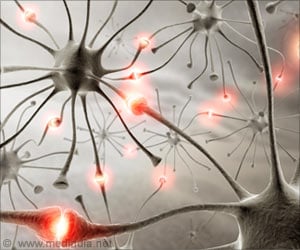For mice, carbon dioxide often means danger - too many animals breathing in too small a space or a hungry predator exhaling nearby.
For mice, carbon dioxide often means danger - too many animals breathing in too small a space or a hungry predator exhaling nearby.
Mice have a way of detecting carbon dioxide, and new research from Rockefeller University shows that a special set of olfactory neurons is involved, a finding that may have implications for how predicted increases in atmospheric carbon dioxide may affect animal behavior.Most olfactory sensory neurons express odorant receptor molecules and reside within the lining of the nasal cavity that detect odors. But a small subset express an enzyme called guanylyl cyclase-D (GC-D).
Peter Mombaerts, professor and head of the Laboratory of Developmental Biology and Neurogenetics at Rockefeller, and Andreas Walz, a research associate in Mombaerts' lab, created a strain of mice in which GC-D expressing neurons glow with a green fluorescent protein.
These GC-D expressing neurons also project their nerve endings to an unusual structure in the back of the olfactory bulb called necklace glomeruli, which resemble a string of beads.
The Rockefeller team's collaborators in China, led by Minmin Luo at the National Institute of Biological Sciences in Beijing, found that all the GC-D expressing neurons in the olfactory epithelium were activated by exposure to carbon dioxide. Conversely, all the cells in the lining of the nasal cavity that were activated by carbon dioxide are the GC-expressing neurons.
"These findings show that a specialized subsystem has evolved in the mouse to detect carbon dioxide," says Mombaerts.
Advertisement
As the amount of carbon dioxide in the whiffs of air was decreased, the accuracy of the animals' response became random. Statistical analysis fixed the threshold for detection at about six-hundredths of a percent, just above the average atmospheric level.
Advertisement
The research does, however, suggest that scientists need to be on the lookout for behavioral changes in animals as carbon dioxide levels increase in the atmosphere, since, at some point increased levels may be detectable by animals, Mombaerts says.
"Animals may adapt to this gradual and persistent increase. Alternatively, the change may induce behavioral changes, such as an increase in irritability and aggression or a decrease in fertility," he says.
Source-Eurekalert
JAY/B








